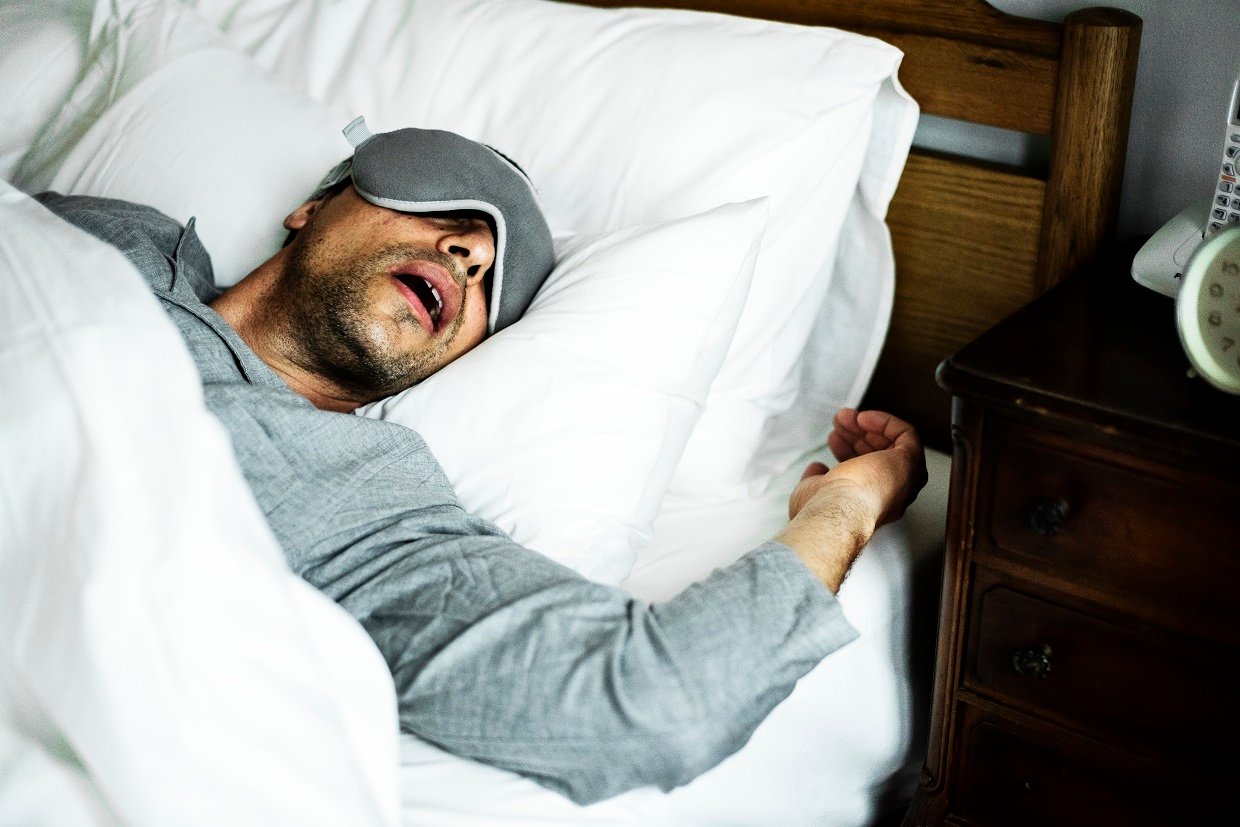Sleep apnea is a very common disorder in people who are overweight or obese but it also affects those who are not overweight at all but have other risk factors for the disease like craniofacial abnormalities like enlarged tonsils or adenoids in children; chronic sinusitis; nasal obstruction due to deviated septum; or sleep-disordered breathing due to an underlying sleep disorder like restless leg syndrome.
The signs and symptoms of sleep apnea in overweight people are similar to those of non-overweight people with the same risk factors for the disease, but they may be less severe, and may not present until adulthood. In children with chronic sinusitis or nasal obstruction due to adenoids, for example, their symptoms may only become apparent when their tonsils or adenoids are removed.
There is a genetic predisposition to sleep apnea, which means that in some families there is a higher chance of developing the disease due to genetics. There may also be an increased risk for sleep apnea if the parents have been obese or overweight themselves or if they had other conditions like hyperthyroidism, diabetes, hypertension, or acid reflux.

Causes of Sleep Apnea
Sleep apnea is a condition where the airways are blocked and the person cannot breathe. There are two types of sleep apnea
Obstructive, where the airway is blocked.
Central, where there is a problem with the brain’s breathing center.
Obstructive sleep apnea can be caused by an enlarged tongue or tonsils, excess weight in the neck area, or an abnormally small throat passage. Central sleep apnea can be caused by heart failure, low oxygen levels in the blood (hypoxia), or other problems with the respiratory system.
In children, sleep apnea can be caused by enlarged tonsils, adenoids, and/or adenoidectomy. In both adults and children, sleep apnea can be caused by a large tongue or excess weight in the neck area. In adults with obstructive sleep apnea, certain positions during sleep may exacerbate symptoms such as the position of the upper arms on the chest which causes an increase in blood flow to that specific area. In general, obstructive sleep apnea is more common in obese men than in obese women.
The most common cause of sleep apnea is an enlarged tongue. In children, the same causes apply and can lead to pain upon waking from sleep. A tongue tie is a type of elongated tissue that connects the bottom front two-thirds of a baby’s tongue to the back portion of their throat, sometimes restricting normal breathing during sleep. A properly positioned tongue tie does not increase any risk for obstructive sleep apnea
What are CPAP Humidifier and How Does it Work?
CPAP machines are used to treat sleep apnea and other breathing problems. They work by providing a constant flow of air into the nose and mouth.
A CPAP Humidifier is an appliance that is attached to a CPAP machine. It has a reservoir that collects water, which is heated up, and then pumped through the humidifier’s ventilator tube. The heated water vaporizes into moist air that is delivered to the patient through the machine’s pressure hose.
This ensures that your airways stay moist during sleep, which will help you feel more rested when you wake up in the morning. The humidifier attaches to the CPAP machine through a tube. This provides air that is moist, which will help you breathe better. By cutting down on the number of times you have to wake up to clear your throat
A humidifier adds moisture to the air that is delivered through a CPAP machine. This will help make it more comfortable for you to breathe and prevents dryness in your airways, which can lead to difficulty sleeping. Humidifier heats water vaporizes into moist air that is delivered to the patient through the machine’s pressure hose. This ensures that your airways stay moist during sleep, which can make it easier to breathe and prevents dryness from building up.
Conclusion
The 7 Top Ways to Treat Your Sleep Apnea and Live a Healthier Life
Sleep apnea is a serious condition that affects the quality of your sleep. It can lead to other health problems and make you tired during the day.
It is important that you know what it is, how it happens, and what you can do about it.
This paragraph will explore 7 ways to treat your sleep apnea and live a healthier life.
1) Lose weight: Excess weight puts pressure on your airway when you lay down at night, making it difficult to breathe properly. Losing weight can help relieve this pressure and improve your sleep apnea symptoms.
2) Exercise: Regular exercise has been shown to improve sleep quality in those with obstructive sleep apnea (OSA). This is due to increased oxygen levels in the drops of the bloodstream as well as reduced stress levels from the workout itself.
3) Get enough sleep: OSA sufferers are often not getting enough hours of deep, uninterrupted rest each night which can lead to issues with alertness and wakefulness throughout the day. Sleeping for 8 hours or more each night is recommended for optimal health.
4) Limit alcohol intake: Alcohol makes it harder to breathe which can make sleep apnea worse.
5) Avoid smoking: Smoking has been shown to cause disrupted sleep patterns and put pressure on the airway when you lay down at night, making it difficult to breathe properly.
6) Use a CPAP Humidifier: CPAP Humidifier is an effective treatment option for sleep apnea and should be used whenever symptoms occur even if they’re not severe, as they can worsen over time. CPAP machines help to strengthen the muscles in your throat so that you have more control over your breathing during sleep.
7) Avoid caffeine: Over-consumption of caffeine can lead to blood pressure spikes and irregular heart rhythms, which may make it difficult for people with sleep apnea to breathe properly during the night.

